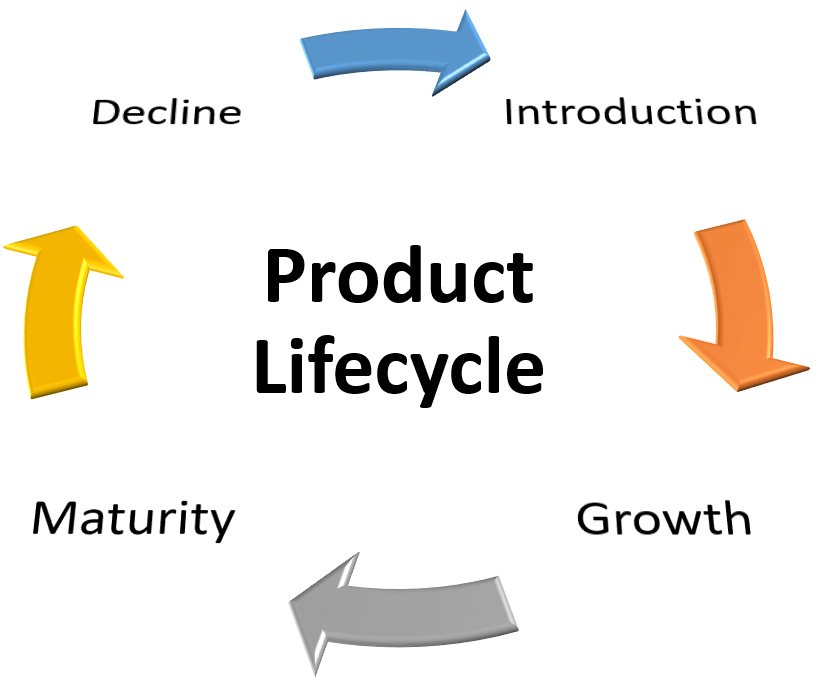
What is a Product life cycle?
The term product life cycle refers to the length of time a product is introduced to consumers into the market until it’s removed from the shelves.Product life cycles are used by management and marketing professionals to help determine advertising schedules, price points, spread to new product markets, packaging redesigns, and more. It is the progression of a product through 5 different stages. The concept of product life cycle helps inform business decision-making, from pricing and promotion to increase or cost-cutting.
The Importance of Product Life Cycle Management.
- It helps to make informed decisions regarding your product.
- Brings about increased awareness of the product and the brand.It makes the process consistent and easy.
- Effective Product life cycle management increases return on investment It enhances product marketing.
- Gives useful data and insights into possible outcomes of the product.
- Helps to manage adverse outcomes of the product.
Stages of product life cycle
There are usually five stages in a product life cycle, your understanding of the stages of the product life cycle can give you insights into better marketing and business decisions. You can grow in your businesses by always responding to changing customer needs, adding new things to your product, and adopting new tech that keeps you up to date in the marketplace. The person that brought about this concept is Theodore Levitt, a German economist who lived in the United States and worked in the celebrated Harvard Business School. Levitt proposed a five-stage model that he named the Product Life Cycle They are Development, Introduction, Growth, Maturity, and decline.
Development
The development stage is the stage where you start your market journey. This is the research phase before a product is introduced to the marketplace. This is when companies pitch to investors, develop prototypes, beta testing, and launch strategy. Companies spend a lot of money during this period without getting anything in return because the product has not been sold yet.
Introduction
This is the second stage in the product life cycle, it is when a particular product is first launched into the marketplace. This is when the advertising team starts their work, at this stage, you need a strong advertising agency to push your product. Normally, when a product is introduced, sales are low and demand builds slowly.At this stage, informative and educational content needs to be posted massively. This stage answers this question “How can I push this product to the customers? “
Content Marketing is key at this stage, running social media ads is also a great strategy depending on your product. Remember to make everything you are doing tailored to your target audience. The success of this stage will determine the next stage.
Growth
This is the third stage of a product life cycle. Success in the introduction stage will determine increased growth. At this phase, consumers have accepted the product in the market and they have started buying the product. Demand for the product is growing which also translates to an increase in profit. Marketing is still on at this stage as potential competitors will start developing at this stage and if you have competitors before then they will also increase their pace. During this phase, the marketing strategy should shift to increasing brand awareness and establishing a brand presence. Reviews from your customers are very helpful in this stage. Keep conversations open about the brand and the product. Be in the faces of your target audience at every point in time.
Maturity Stage of the Product Life Cycle
The maturity stage is when the sales begin to level off from the rapid growth period. At this stage, you need to be able to look at the stages of the cycle so far critically. Allow your team to answer questions like : What did we do best?What did we do that was not so good? What can be done better? How do we improve our strategy? What are our competitors (if any) doing? This may lead to the following:
Reduced product prices
Increased distribution channels.
Better customer experiences
Once the peak is reached, it is no longer possible to grow, but the company can act to avoid a significant decline. For example, look at top brands like Coca-Cola, they still engage in consistent marketing because they understand that brands are not forever as there could be market instabilities and behavioral changes in the target audience.
Decline
The painful truth is that nothing lasts forever. This stage can occur as a result of various reasons:
Natural result– It is natural and inevitable that a product will not last forever.
Introduction of a new and innovative product.
Competitors
Reduced Profit.
In order to avoid a fast decline in sales, a company should practice some of these strategies:
- Introduction of New features to the product.
- Product upgrade
- Change in packaging
- Staying up to date on Market Trends
- Selective distribution
Conclusion
The product life cycle stages can be adopted whether you are developing a new product or working with a well-established brand.




